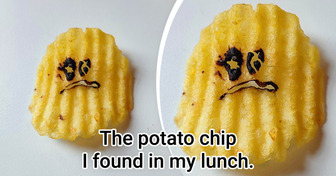14 People Who Bet on Self-Irony and Won Big Time


Each cell in the human body has its own physiology and DNA. Researchers can’t quantify the ratio of human cells to microbiota in our bodies. In 2016, scientists mapped the most abundant bacteria in humans and found that we have approximately the same percentage of human and microbial cells, notably in our digestive systems. These microorganisms defend us from germs, help digestion, and create vitamins.
That’s why we at Bright Side would like to shed some light on 6 phenomena for which we have yet to find a scientific explanation.
In 2016, a group of Israeli scientists concluded that there’s an average ratio of 1.3 bacteria for every human cell. This finding updates the common knowledge that bacteria outnumber human cells by a ratio of at least 10:1, which has been wrongly accepted since the 1970s.
This comprises microorganisms and organisms initially misclassified as bacteria. The largest concentration of this little life exists in the oxygen-depleted, murky depths of our guts.
The human body has about 30 trillion human cells. At the same time, its average microbiome can be roughly estimated at 39 trillion cells — including bacteria, viruses, and fungi that live on and in us, representing a tiny fraction of our body mass that acts with great power over our daily lives.
It is also known that microbial cells carry far more genes — almost 500 times more than human cells. A microbiologist from Caltech, Professor Sarkis Mazmanian, says, “We don’t just have one genome; the genes of our microbiome are essentially a second genome that boosts the activity of our genome.” However, he thinks that our humanity comes from the mix of our DNA and the DNA of the microbes in our guts.
Scientists are discovering microbial and bacterial variables that can be exploited to generate breakthrough therapeutics for dry eye disease and corneal scarring. Someday, microbes may be engineered to cure human eye ailments. They also learned that each person’s gut bacteria is unique and that the mix of microbes can significantly affect their health, such as their weight and whether or not they will get heart disease.
It’s a scientific fact that human DNA hosts similar DNA traces of plants and animals, most notably with their closest “relatives,” apes. Humans are genetically identical to chimpanzees and bonobos, and they are also similar to bananas. Lizards and humans have fish-like brains. These components control respiration, balance, coordination, eating, mating, and defense. “Lizard brain” refers to the brain stem, cerebellum, and basal ganglia.
Even though science has done a great job over the last 50 years at helping us fight infectious diseases, there has been a vast and scary rise in autoimmune diseases and allergies. Working on the microbiome is important because it shows how changes in the bacteria caused by our success in fighting pathogens have led to a new set of diseases that we now have to deal with.
Moreover, the microbiome’s functions reveal new insights about digestion, immune system regulation, illness prevention, and vitamin synthesis.
It’s a work in progress to discover the good and bad ways these tiny organisms modify our health and even history. But typically, our relationship with bacteria has generally been one of conflict to date. Every day, the microbes that live in the body change. More and more scientists are looking into these microbes to find out which ones are good and which ones are bad.
Every person has a different mix of microbes, valid from birth. How they come into the world (by natural birth or C-section), if they drink breast milk, what animals they are around, and what medicine they take can all affect how they grow and develop.
Babies and young children are especially susceptible during the formative years of their microbiomes. External factors could negatively impact and compromise their health, so it’s essential always to seek medical assistance/advice since the right health approach could set them on the right course for their broader future wellness.
Beyond all the different aspects we already explained, scientists are now conducting more research about the connection between the brain and the digestive system. New lines of the investigation reveal relevant information about the gut-brain relationship regarding our physical and mental health.
Scientists currently believe that the nervous system from our digestive system acts as a “second brain” in our bodies and that the correlation between our feelings and gut microbiome depends on how well the latter is taken care of, meaning that our gut health and dietary habits could significantly explain our moods.
Which one of the facts above shocked you the most? Do you have any facts about the human body to share with us?











